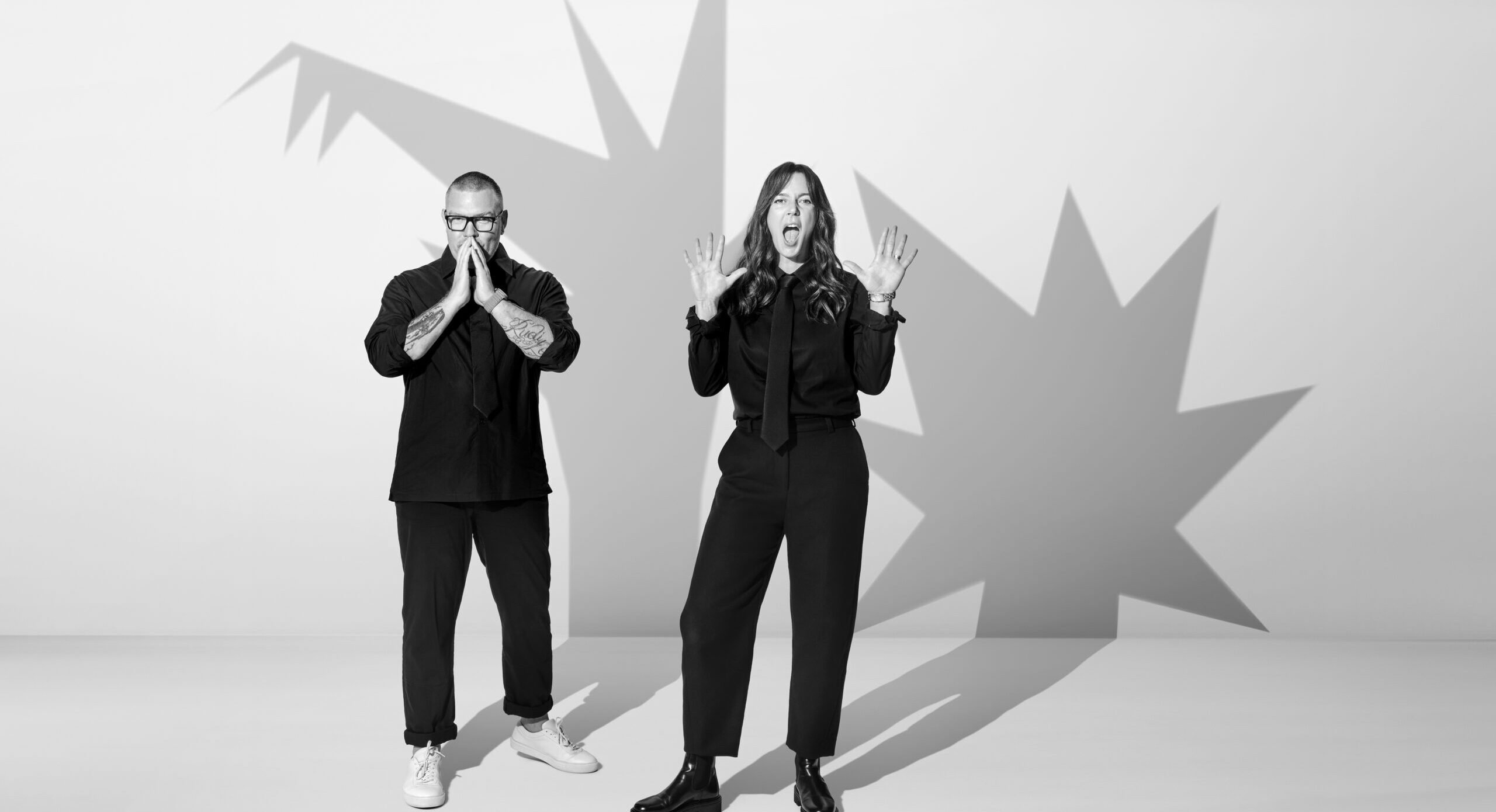Cam Blackley and Emily Taylor‘s Bureau of Everything has joined a burgeoning list of creative independents set up by ex-holdco execs looking to escape the “rat wheel”, meet clients where they’re actually at, and combat the industry’s stagnancy, the pair tell Mediaweek.
Bureau of Everything launched last week. Since then, Alex Derwin and Hugh Munro have unveiled Rick Barry. The week before the Bureau’s launch, ex-Bullfrog partners’ announced Pembleton, an ‘ideas clubhouse’. In March, Hawke’s Brewing Co’s founders and former Droga5 creatives set up The Ministry for Communication & The Arts. In February, it was Ryan O’Connell and John Marshall‘s jnr.
And that’s just this year. Agencies like Special, Bear Meets Eagle on Fire, Thinkerbell, Cocogun, and The Hallway have represented the indie scene for years.
But in the past few years, that scene has exploded. When the pandemic hit, it highlighted or worsened agency pains like overheads, staff costs, and shrinking client budgets. The market continues to be soft, and marketing dollars are stretched and scrutinised. But constraint is creativity’s ally.
A wave of seasoned, well-respected leaders who’d spent their careers building and leading holding company agencies struck out on their own: Chris Howatson‘s Howatson+Co; Jaimes Leggett‘s Today the Brave; Justin Hind‘s Reunion; Laura Aldington, Simone Gupta, and Jon Austin‘s Supermassive; Pete Bosilkovski‘s It’s Friday.
“All of those agencies are founded by and are led by people who are coming out of businesses where it was their job to listen to clients, and to think about how to position agencies and networks in a way that recognises probably a much bigger shift that’s happened client side than we’ve really seen agency side,” Taylor, M&C Saatchi’s former CSO and Bureau of Everything’s strategic founder, says of the phenomenon.
“If I think about a lot of the clients that we’ve been working on … there’s a lot of client organisations that have flipped themselves on their heads, whether that’s moving to agile, or just completely disrupting how they’re structured, and how they’re working with different marketing agencies and functions in house. I’m not sure the agency world, or the marketing industry, had evolved to actually meet that.”
Blackley, the CCO who left M&C Saatchi in October saying he wanted to “build something new”, says that the more fledgling indies have succeeded, the more others have felt confident enough to follow.
“It feels like there’s a whole lot of possibilities and a whole lot of potential to finally change things. The industry had been quite stagnant for a while and almost like that rat wheel, and every year blended into the next year, and you’d never really have any sense of progress.
“So I think there’s a lot of people feeling it simultaneously and as humans, we tended to share that hive mentality.”
Each indie has approached its perceived gap in the market slightly differently – although given the glut of them, they’ll have to differentiate themselves against each other, in addition to the holdcos.
Howatson has acquired Kenny Hill‘s Akkomplice, offers creative and media, and wants to focus on this market, capping at 200 staff. Honda recently created an in-house agency and streamlined its external agency roster, appointing Howatson+Co as its sole creative and media partner to work hand-in-hand with the in-house unit.
Supermassive is one of the 1% of majority female-founded creative agencies, and operates using a hub and spoke model – a small core team that engages contractors to solve specific problems for specific clients. The Ministry for Communication & The Arts was designed to service the founders’ own brands, but will also work with other clients.
Each of them, fronted by “really senior people,” are listening to what clients need, Taylor says, “whether it’s plugging into an in house model, or working on a series of projects for them, where they need to really get under the skin of the problem and solve it.”
Those clients are saying, “‘I want seniority, and I don’t want to work with anyone but the people at the helm,'” she adds.
Bureau of Everything doesn’t want to be an agency – the term has “baggage” – but it does want to rethink the agency model. Instead of the usual focus on art director and copywriter, Blackley and Taylor are building a shop built from creative-strategist pairings.
That structure better matches “complex” clients needs and the current marketing landscape, they think. It means the creative is involved in the strategy, and the strategist sticks close to the work, all the way through to execution.
The ambition is to scale it – to a core team of roughly 12-15, engaging external experts for different clients or projects – and create “unmissable work”.
“With our experience, we think this is what’s needed to change stuff,” Blackley says.
“But everyone’s got their slightly different perspective, so it’ll be good to see how it all works out.”
—
See also: Blackley and Taylor plan to pioneer strat-creative model with Bureau of Everything
